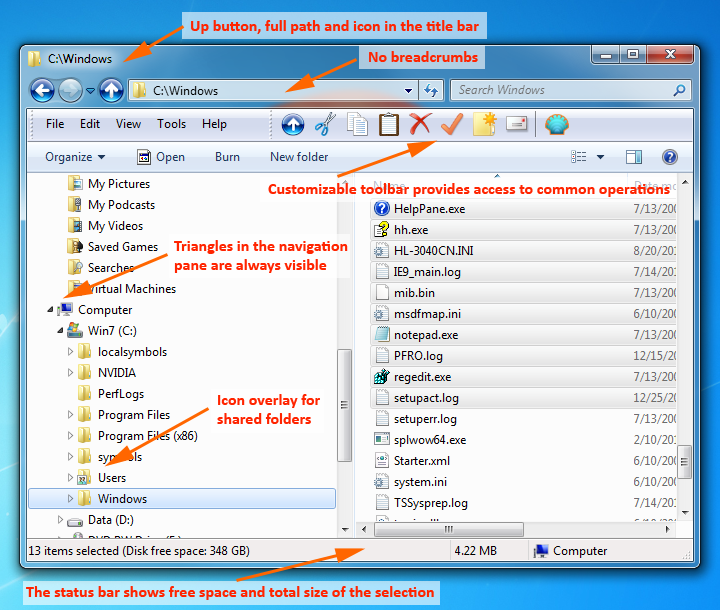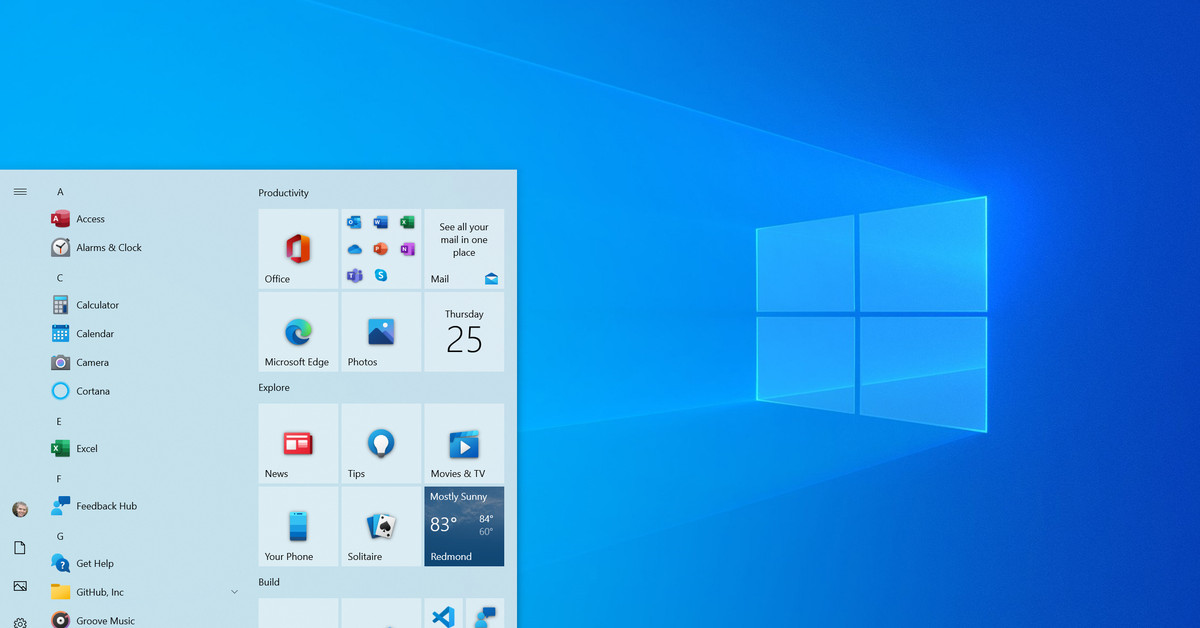Jul 16, 2010 Windows 7: Mac style Start /menu/Taskbar. 15 Jul 2010 #1: deyno. 5 posts Mac style Start /menu/Taskbar. Hi Guys, Really like the look of a Mac but the feel of windows. As the title says, i'm after a man style start menu/task bar. I've tried a few, winmac and another one i. The Second widely used operating system in the world is the Mac OS X. Both Windows 7 and Mac OS X have unique features which are very useful to us. So how about installing Windows 7 on Mac OS X and enjoy both Windows 7 and Mac OS X Leopard together!

Apple’s Mac OS has always been famous for its amazing and convenient features. Many of its components are worth learning from windows. In fact, every time a new version of windows is released, you can see many shadows of apple, such as the flat chart of windows 10. Let’s take a look at the Mac OS which is worth learning from windows.
Speed up the operation
Users of Apple know that the desktop dock is a proud feature of Mac OS. It is very convenient for us to quickly perform common operations, tap the icon, you can quickly start the commonly used program (Figure 1).
Figure 1 MAC OS convenient dock
The daily operation of windows mainly relies on desktop shortcut and start menu, which is obviously a step away from the convenience design. However, to enjoy the dock bar on windows, the rocketdock plug-in can easily achieve similar effects.
After starting the program, you can see the same dock bar as Mac OS on the top of the desktop. You can add or replace icons by yourself. Right click to enter settings and make more custom settings. In the future, just click on the bar chart at any time to quickly start the program (Figure 2).
201503mac2
Figure 2 using the dock bar on Windows
Of course, in addition to the simulation dock, there are many excellent third-party quick start tools under windows. Launch portable is such a good tool. After installing it, it will appear on the desktop. You can open the program you want by simply clicking a few keys, instead of having to dive into several pages of the start menu or searching through the desktop icons on the full screen every time. It is quite convenient (Figure 3).
Figure 3 launch various programs quickly using launch portable
Speed up efficiency — more efficient file management
Finder is Apple’s default file management program, which includes almost all functions of the computer, especially opening and viewing files, disks, network volumes and running other programs. It also allows users to search multiple folder windows through different finder tabs at one time, just like browser pages. Through it, we can achieve efficient file management (Figure 4).
Figure 4 file manager of Mac OS
Although the resource manager of each version of windows has been improved, it is still a step away from the finder of Mac OS. For example, the multiple tags supported by the finder of Mac OS have not been implemented until the release of windows 10. To achieve more efficient file management like Mac OS, we can use other third-party resource manager software to narrow the distance between Mac OS and Mac OS.
Windows 7 / 8 users can use clover 3 to add multiple tags to the explorer. After installation, clover will be seamlessly integrated with the resource manager. Click the new tab to create a new window. The specific use is the same as that of a multi label browser. When comparing the contents of two folders or moving files to different partitions, it is much more convenient (Figure 5).
Free Mac Os For Windows
Figure 5. After clover 3 is installed, Explorer can use multi label browsing
Install Mac Os On Windows 10
Improve efficiency – volume control is simpler
As we all know, in Mac OS, you can adjust the volume through the user-defined shortcut key, which is very convenient to adjust the volume through the keyboard. For the control of the optical drive, you can pop up / CD by pressing F12 key for 2 seconds.
Windows system itself has no shortcut key to adjust the volume. By default, it can only be adjusted by mouse. Obviously, there is a gap between the operating efficiency and Mac OS. But now by modifying the registry, you can set the volume control hotkey. For example, you need to set pageup to increase the volume and pagedown to decrease the volume. Just start Notepad, enter the following code and save it as aa.reg File (Figure 6)
Figure 6. Specify the hotkey as the volume adjustment key by editing the registry key value setting
Windows Registry Editor Version 5.00
[HKEY_LOCAL_MACHINESYSTEMCurrentControlSetControlKeyboard Layout]
“Scancode Map”=hex:00,00,00,00,00,00,00,00,03,00,00,00,30,E0,49,E0,2E,E0,51,E0,00,00,00,00
:no_upscale()/cdn.vox-cdn.com/uploads/chorus_asset/file/7177929/Parallels Desktop 12 New VM Wizard.png)
Tips:
The method of self defining hotkey is to change the original key to adjust the volume key by modifying the registry. Here, the mapping code format consists of five parts, including the number of mapped keys, the mapped key code and the mapped key code (other parameters are the same). The number of mapped keys starts from the second paragraph, and 03 means to replace pageup and pagedown. The mapped key refers to the key that needs to be set as adjustment, and the mapped key is the key to adjust the volume. If you want to replace other keys, the specific code of each key can be tinyurl.com/lb2tktm Query (Figure 7).

Figure 7 key mapping code format analysis
After editing the code, double-click to import it into the registry, so that you can control the volume through pageup and pagedown. Of course, in addition to this, there are more excellent volume adjustment software under windows Nircmd.exe , automatically adjust the volume through the command line. After downloading Nircmdc.exe and Nircmd.exe Copy it to C: Windows / system32 and create a batch process Volume.bat Placed in C: , the code only needs one line:
nircmd.exe setsysvolume 65535
Start Menu Mac Os X For Windows 7 Ultimate
Here, the parameters range from 0 to 65535, indicating different volume values. If the value is increased with “-” to reduce the volume, 1 to mute, and 0 to cancel the mute.
Then create a shortcut on the desktop for this batch processing, and associate the F9 key with the shortcut. In this way, if we want to adjust the volume to the appropriate value in the future, we can automatically adjust to the set volume value by pressing the F9 key at any time (Fig. 8).
Start Menu Mac Os X For Windows 7
Figure 8 the volume can be adjusted with one key through the association of hotkeys
be careful:
The above changes are all examples. Maybe you don’t want to change the default value of the pageup button. Therefore, before making the above-mentioned attempts, it is necessary to export and save the corresponding registry key values, so as to restore the original state in the future.
More learning methods
In addition to the above advantages, Mac OS has a lot to learn from windows. For example, Mac OS has high security and is not easy to be attacked by viruses. Windows users can achieve higher security by installing patches and anti-virus software in time. Mac OS can download secure applications from the app store, and windows 8 has also started to build in app stores. As long as we change the concept of downloading and acquire new applications from the app store, we can make our system more secure. There are still many learning points like this. You can learn according to your own needs.
Write at the end: there is a gap between each other, learn from each other
Windows, Mac OS, and Linux have their own advantages and disadvantages. As operating system developers, they are learning from each other and learning from each other. After the new version of each system is released, they can see each other’s shadow. As users, although we can not participate in the development of the operating system, but with the help of the universal Internet, we can manually transform the system, or with the help of various third-party plug-ins to make up for the deficiencies of the system. The above mainly takes Windows Learning from other systems as an example. Similarly, Mac OS and Linux also have many places to learn from windows. You can learn from each other’s advantages by manually modifying or installing third-party software according to your own needs.
How to start up in macOS from Windows
- From the notification area on the right side of the Windows taskbar, click to show hidden icons.
- Click the Boot Camp icon .
- From the menu shown, choose Restart in macOS.
If you haven't installed the latest Boot Camp updates, you might get the message ”Could not locate the OS X boot volume.'
Or use Startup Manager as your Mac starts up:
- Restart your Mac from the Start menu in Windows.
- Press and hold the Option (or Alt) ⌥ key as your Mac begins to restart.
- Select your Mac startup volume (Macintosh HD) in the Startup Manager window, then press Return or click the up arrow:
How to start up in Windows from macOS
- Use Startup Manager to choose your Windows (Boot Camp) volume during startup.
- Or select your Boot Camp volume in Startup Disk preferences, then restart.
Learn more
- If you're having difficulty using VoiceOver or another screen reader to complete these steps, please contact Apple Support.
- Learn how to install Windows 10 on your Mac.